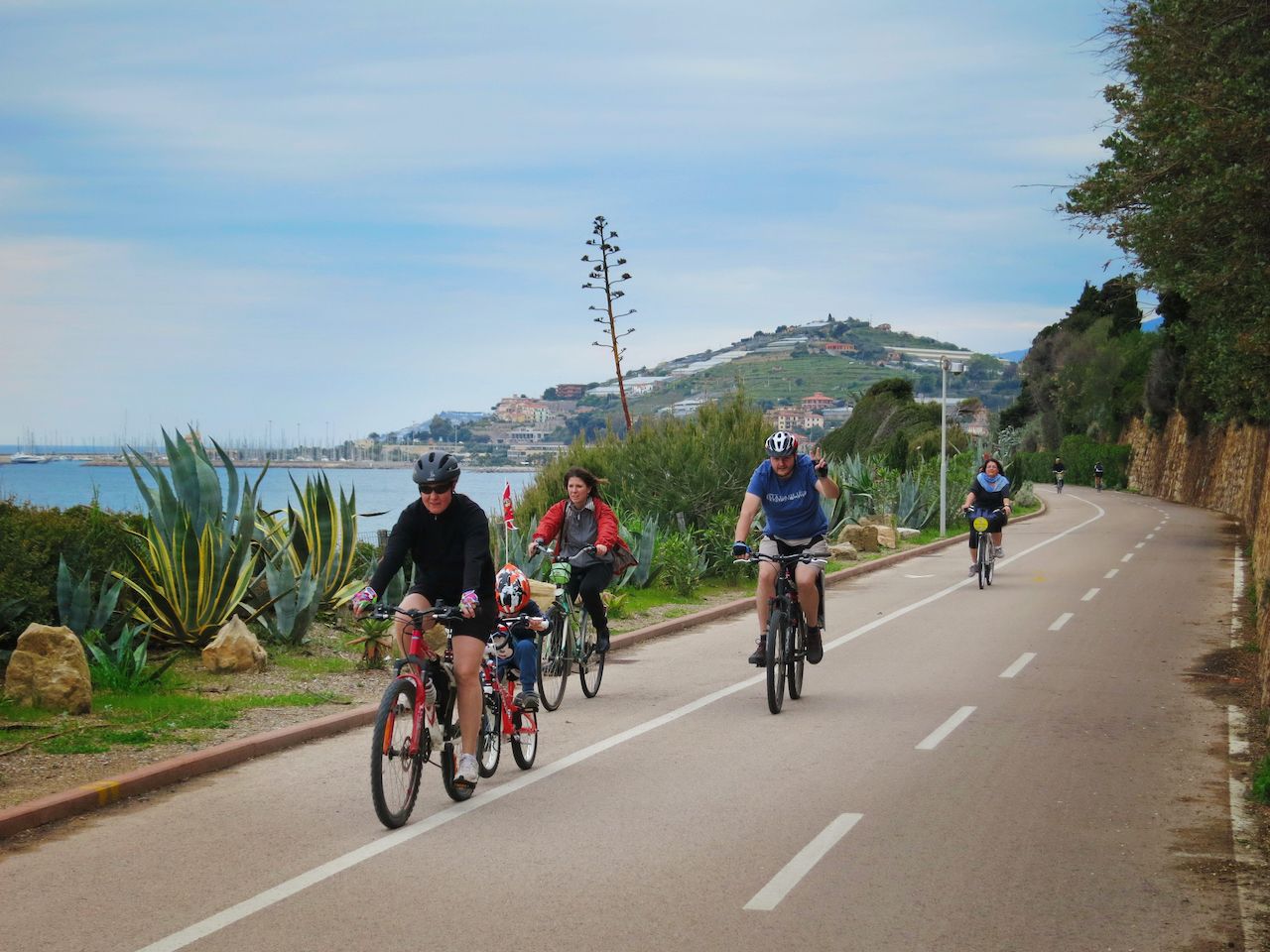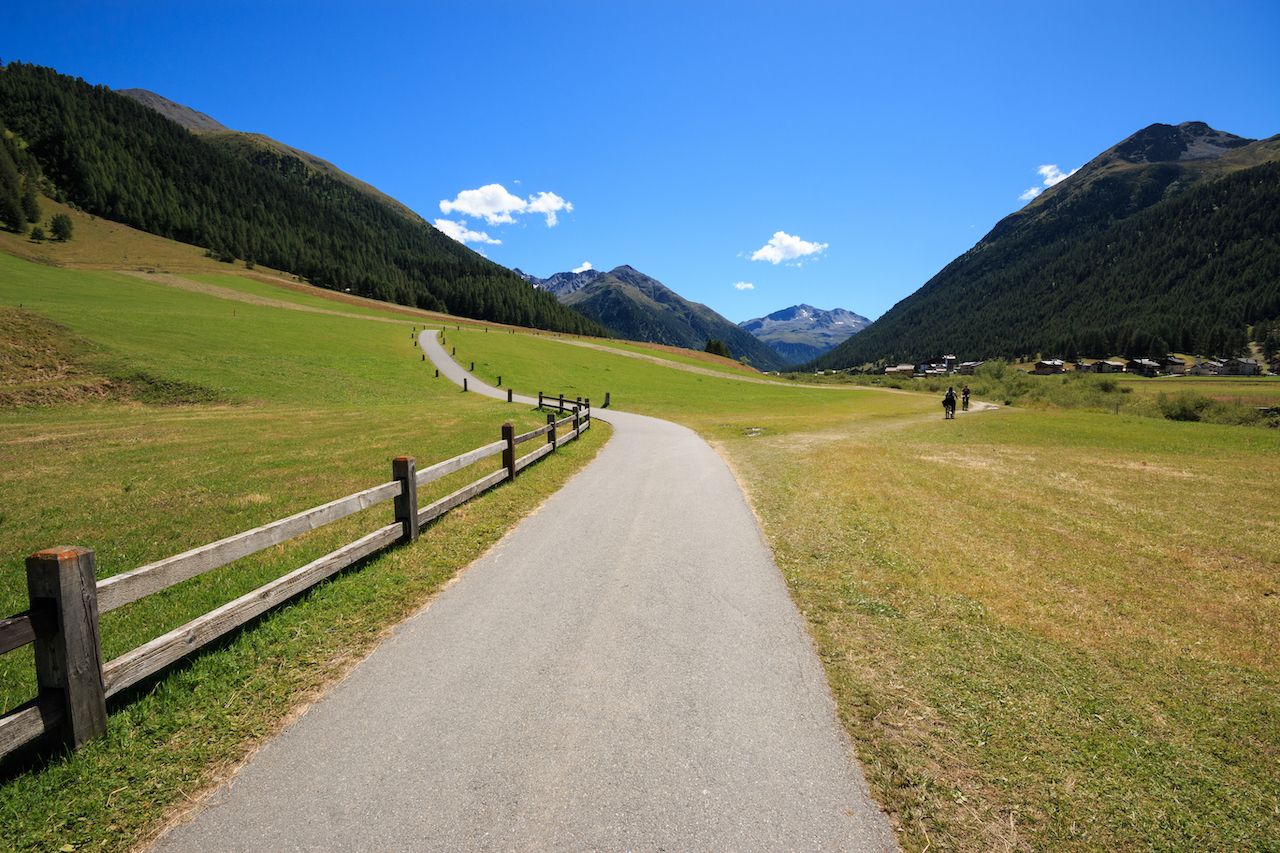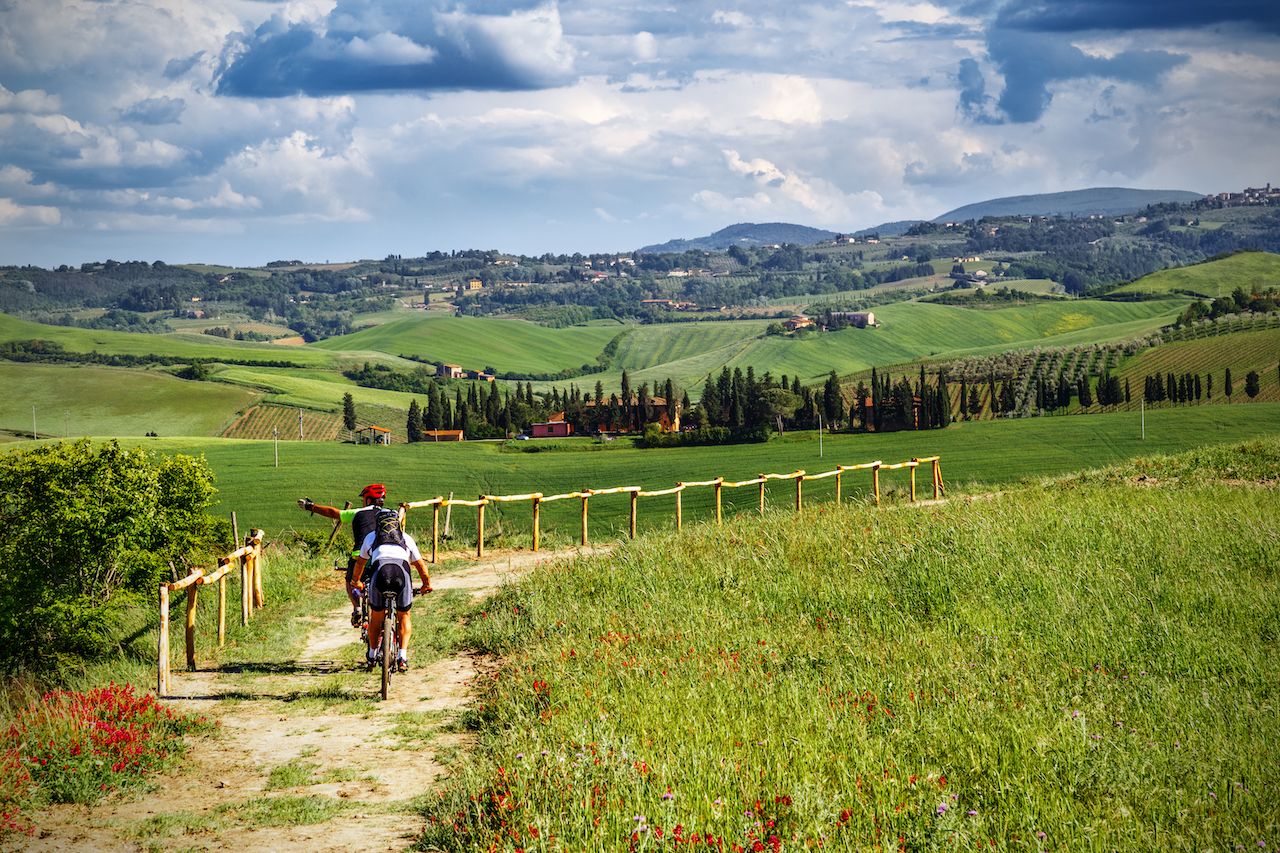Italians refer to car-free bicycling routes as “proper” cycle paths, and Italy is further developing its already widespread cycling network to include proper rides from the top of the boot to the heel. Beyond the many already bike-friendly cities, there are now connections to even longer routes outside of urban areas. These cycling routes vary vastly in length, difficulty, landscape, and points of interest.
Below, we’ve outlined five routes that combine many aspects of the Italian peninsula — including cuisine, history, nature, and a bit of adrenaline — with the bonus of being car-free beyond city centers. Bicycle renting locations are available both in the cities and along the cycling routes, where they also provide equipment, information, assistance, and guided tours.





